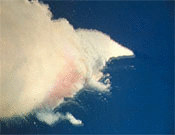Gareth Long's interdisciplinary practice explores the nature of various forms of contemporary communication by subjecting the narratives conveyed through material objects, such as video and books, to unexpected and often highly erroneous transliterations. As with the work of the artist's conceptual forebearers, like Pierre Hughye and Pierre Bismuth, the interpolation of one medium with those of another does more than simply expose their respective limits: it draws each into unfamiliar light, under which many of our habituated ways of navigating the world are suddenly put into relief. With Don Quixote (2006), Long ran the George Guidall-narrated audiobook version of Cervantes' novel through speech recognition software, in attempt to faithfully reproduce the original text. Yet even while the artist exactingly trained the software to respond to the accent and intonation of Guidall's voice, errors arose - especially considering that Guidall often assumes different voices for the characters of the story. Long bound the resulting text in the novel's actual softcover, as if in faithful reproduction to the original: a most appropriate homage to Quixote's confusion of fiction and fact. It's hard to dazzle us (2006) is the artist's latest exploration of lenticular printing, a process in which up to thirty video frames can be embedded in a single, printed image. A viewer can see a given print's full succession of images only by moving around it - terms of engagement strangely appropriate for Long's depiction of the 1986 explosion of Challenger Flight 51 L. By taking an event that many remember on highly personal terms and enabling a viewer's mobile participation - and, on a more unsettling level, ability to play forward or play back the sequence, through their movement - Long pinpoints the intersection of subjective and collective memory, and the continual need to evaluate the ways we remember. - Tyler Coburn
Image: Gareth Long, It's hard to dazzle us, 2006
